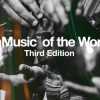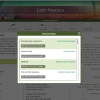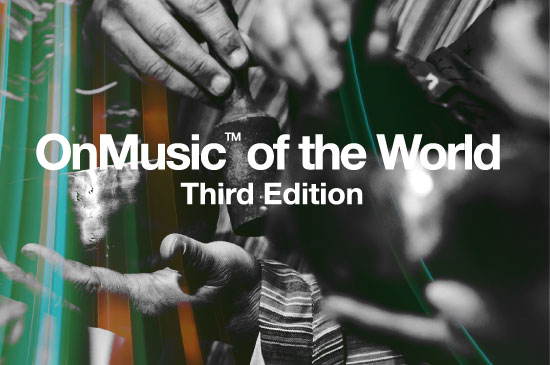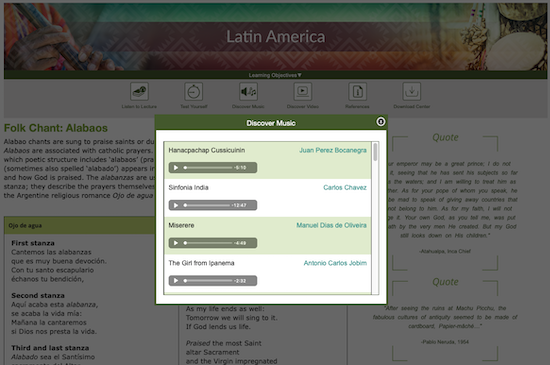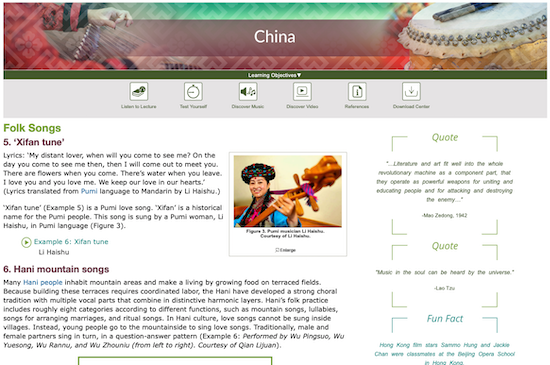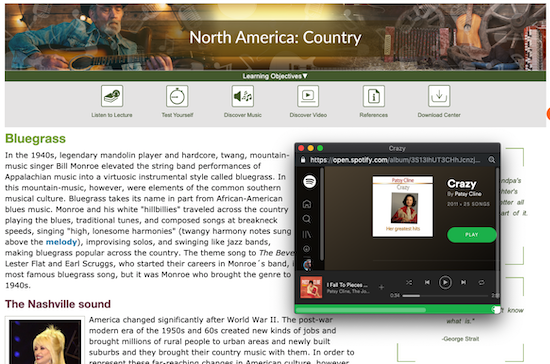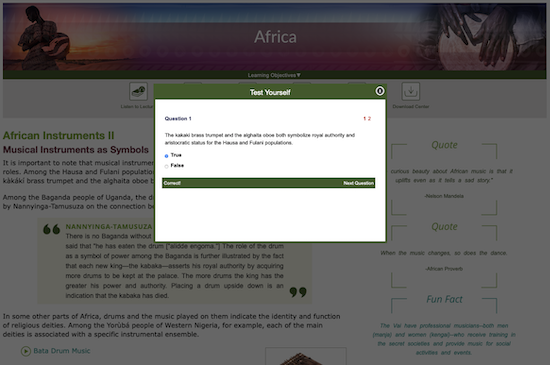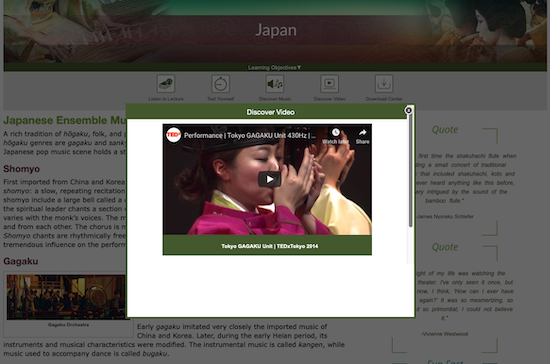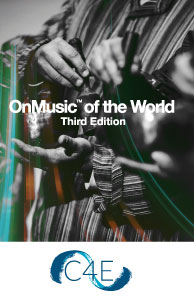New Features!
- New Introduction and China chapters
- Listen to lecture and Download Center tools
- Improved user interface
Click here for an interactive preview!
OnMusic of the World Third Edition takes students on an exciting journey, discovering musical cultures of the world. The text contains music from Africa, the Caribbean, North America, Latin America, South Asia, Korea, Central Asia, Indonesia, Japan, and China. This courseware includes engaging material with highly interactive maps, 10 listening guides, 45 music examples, 22 original performance videos, and links to YouTube videos.
Whether you teach an online, face-to-face or a hybrid course, OnMusic of the World Third Edition offers an easy-to-use, turn-key solution as the world music textbook for your course. The courseware has seamless integration of text, music, and testing – designed for maximum instructor efficiency and best possible student experience.
This product contains an Access Code Only!
Music Selections – With an extensive selection of music, every lesson in this course contains streaming music.
Listen to Lecture – Text is narrated for online listening or downloadable for offline playback.
Discover Video – Videos in every chapter reinforce student understanding and engagement. Our video applet keeps students on the page and on task.
Interactive Period Maps – Complete sets of maps cover each region of the world as they are discussed and include music examples.
Written Assignments – Six optional written assignments are included in OnMusic of the World.
Assessments – OnMusic of the World includes automatically graded quizzes at the end of each region, along with a midterm and final exam, all of which can be used as is or customized to fit your needs.
Customization – OnMusic of the World is offered in our powerful, yet easy-to-use courseware platform. Instructors can add, remove, and edit content, assessment material, and assignments at will, or leave it as is for a great out of the box experience. Additional Features in every chapter
